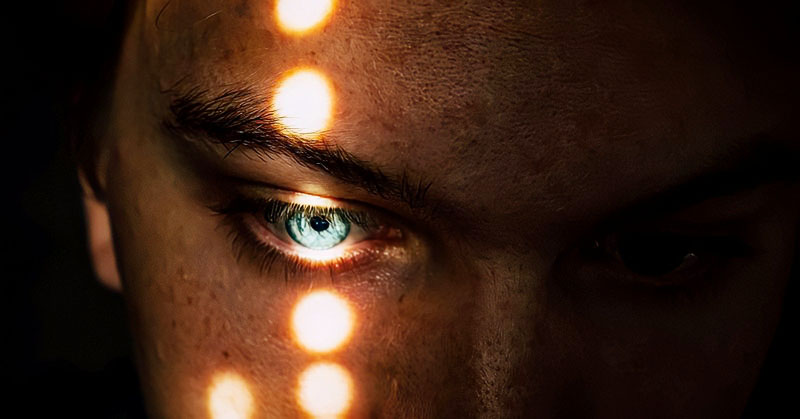Do you have a hard time with eye contact?
You’re not the only one.
It plays an important role in healthy socialization, but lots of people find it deeply uncomfortable.
People tend to view those who make and maintain eye contact in conversations as more friendly, welcoming, open, and trustworthy.
And, unfortunately, those that don’t may be viewed with skepticism, as untrustworthy, or closed off.
Then there is the common myth that refusing or fleeting eye contact can be interpreted as a sign of dishonesty and lying.
In reality, good liars may not throw any body language signs that indicate dishonesty. They are aware that others watch for these signs. Instead, they might look a person straight in the eye when they lie to them, knowing that the person is more likely to believe them.
That is a problem for people who have a genuine dislike of making and holding eye contact in conversations.
A lack of eye contact usually doesn’t have anything to do with character. It has more to do with shyness, anxiety, mental quirks, or mental illnesses that make that facet of socialization harder. Eye contact anxiety may also be associated with neuroticism, psychopathy, PTSD, and autism.
Why do some people find it so excruciatingly difficult to make eye contact and what can you do to make it easier?
Speak to an accredited and experienced therapist to help you deal with the crippling shyness and social anxiety that makes eye contact so excruciating for you. You may want to try speaking to one via BetterHelp.com for quality care at its most convenient.
What is eye contact anxiety?
Eye contact anxiety refers to the discomfort a person feels when making eye contact or continuing to look into someone’s eyes.
The type of discomfort the person experiences will be influenced by why they feel the way that they do. Everyone has different comfort levels when it comes to eye contact.
Some may experience mild discomfort. Others may feel a harsh emotional response that causes them great distress – such as a person with autism experiencing an overload and meltdown or a person with anxiety experiencing an anxiety attack.
Eye contact anxiety may also be caused by shyness or lack of confidence in people without diagnosable mental health issues.
Direct eye contact with another person causes specific responses in the brain, some of which can be impeded or problematic depending on the individual’s personality.
That information interpretation can be further disrupted due to evidence suggesting that verbal interpretation is also tied into the same parts of the mind that govern eye contact.
Eye Contact And Autism
Difficulty with eye contact is a common attribute associated with autism.
Those with autism have greater activity in the areas of the brain that are responsible for interpreting facial expressions. They avoid eye contact because it can cause sensory overload, extreme discomfort, and even pain.
An autistic person may also experience discomfort because eye contact is an intimate thing for a lot of people.
It can stir up a lot of emotions that are difficult for an autistic person to experience and process due to complications of the disorder.
Eye Contact And Social Anxiety
A person with social anxiety may feel extreme discomfort and outright fear from making eye contact with others.
The act causes the amygdala – the part of the brain responsible for fear responses – to warn the person of danger when there is no real threat.
The person with social anxiety may go out of their way to avoid eye contact and socialization so as to not experience feelings of discomfort, wrongness, or anxiety attacks.
It may be surprising how diverse people with social anxiety can be. They’re not always quiet, introverted people who avoid the public eye at all costs.
There are numerous artists, comedians, and musicians with social anxiety who are performing in front of crowds but have a difficult time in one-on-one socialization.
What is an appropriate amount of eye contact?
The sweet spot for eye contact depends on the social setting.
In a personal relationship, longer periods of eye contact are often welcome because there is a shared intimacy between people.
That length can extend depending on how close those people are. Casual friendships should go lighter on eye contact, while deeper and more intimate relationships can share longer gazes.
In the professional world, it’s better to aim for a moderate length of time or break the gaze at intervals that make sense if you need a moment to recover or reset yourself.
Ideally, you’ll want to pay attention to the cadence, flow, and emotional weight of the situation.
For example, it’s often better to hold eye contact so as not to send a non-verbal cue that your position is soft or weak in a serious conversation, argument, or business dealings.
In casual conversation, you could break and reestablish eye contact every few sentences and no one would really think twice about it.
And people generally don’t pay much mind if you aren’t devoting a great amount of time to a speaker when you’re in a group setting.
It takes time and practice, but after a while you can pick up on and feel the flow of conversations to find the right places to break eye contact.
Long glances are better than hard stares. A good general rule of thumb is about 5-10 seconds per long glance.
Where do you actually look for maintaining eye contact?
The phrase “eye contact” may seem like a fairly straightforward thing, but it’s not.
Eye contact doesn’t necessarily mean that you are always and constantly looking into the eyes of the other person.
In fact, you can derive similar social and nonverbal benefits by looking into the general area of the eyes or even other parts of the person’s face.
It may be difficult for someone to look directly into another person’s eyes, but they may experience less discomfort if they instead look at the bridge of the nose or just above their eyes.
If you’re working to build more comfort for eye contact, you can also switch around a bit throughout the conversation.
Look into the person’s eyes for a short period, break your gaze, and then look at the bridge of their nose instead. People generally won’t notice the difference.
One small warning: you’ll want to avoid shifting from their eyes to the bridge of their nose without breaking your gaze, because that will cause them to wonder what you’re actually looking at.
How do you lessen the discomfort of eye contact anxiety?
One’s ability to lessen the discomfort they experience from eye contact anxiety is going to depend on why they are experiencing it in the first place.
More severe issues like social anxiety disorder, PTSD, and autism will need addressing at their core before fringe issues can be changed. That may require the assistance of a certified professional or appropriate medication.
Yet, there are other ways that one can try working on their eye contact anxiety.
In trying to work through issues like these, it’s often beneficial to slowly immerse themselves in what is making you uncomfortable.
It might be easier to practice eye contact with someone you trust or a loved one if you have a difficult time with strangers or people of authority.
A video chat can also be a good option for eye contact practice and for feeling out the pacing of conversation. That additional technological layer between people can provide a softer environment to practice in.
Once you’re more comfortable with that type of eye contact, you can continue practicing in conversations with work associates and strangers.
Establish eye contact with other people before you start talking to them. In doing so, you can create a habit that becomes muscle memory and instinct rather than needing to think about how you are going to interact.
After that initial bond is established, you can more freely look away or break your gaze with body language at an appropriate time.
It’s generally more important to maintain eye contact while listening than speaking. People may not feel like you’re actively listening if your attention is clearly elsewhere while they are talking.
A good rule of thumb is to maintain eye contact about 70% of the time while listening and 50% while talking.
Developing oneself is not something that happens overnight. It requires persistent, consistent effort to work through that type of anxiety.
Improvement will typically develop gradually over a long period of time – and that’s okay! It’s okay because this type of self-improvement is likely to be with you for the rest of your life.
Breaking Eye Contact
There are right and wrong ways to break eye contact. It’s never a good idea to look down and away as this can be interpreted to be communicating nervousness or dishonesty.
It’s never a good idea to use your phone as a distraction, paying more attention to it than your conversation partner.
When you break eye contact, it’s okay to look off to the side or up and away.
You can also use body language as a means of breaking eye contact, like giving an emphatic nod of agreement to the other person’s point.
Or if a new person joins the conversation, that’s also a great time to shift one’s attention.
Developing And Honing Your Social Skills
The importance of healthy eye contact cannot be understated. Many people consciously and subconsciously base their interpretations of other people on nonverbal cues, eye contact being one of the most important.
It may not be factually correct, but that’s just the way people tend to interpret one another. Quality eye contact can communicate honesty and integrity in a way that words cannot.
Do consider consulting with a mental health professional if you feel distress over eye contact with other people. It may be caused by a problem that requires more personalized, professional help to overcome.
BetterHelp.com is a website where you can connect with a therapist via phone, video, or instant message.
You might not think your problems are big enough to warrant professional therapy but please don’t do yourself that disservice. Nothing is insignificant if it is affecting your mental well-being.
Too many people try to muddle through and do their best to overcome issues that they never really get to grips with. If it’s at all possible in your circumstances, therapy is 100% the best way forward.
Here’s that link again if you’d like to learn more about the service BetterHelp.com provide and the process of getting started.
You’ve already taken the first step just by searching for and reading this article. The worst thing you can do right now is nothing. The best thing is to speak to a therapist. The next best thing is to implement everything you’ve learned in this article by yourself. The choice is yours.
You may also like:
- 10 Confidence Hacks For The Socially Awkward Person
- The Socially Awkward Person’s Guide To Dating
- 7 Ways To Safely Show Emotional Vulnerability In A Relationship
- Say These 6 Positive Affirmations Daily To Build Self-Esteem And Confidence










